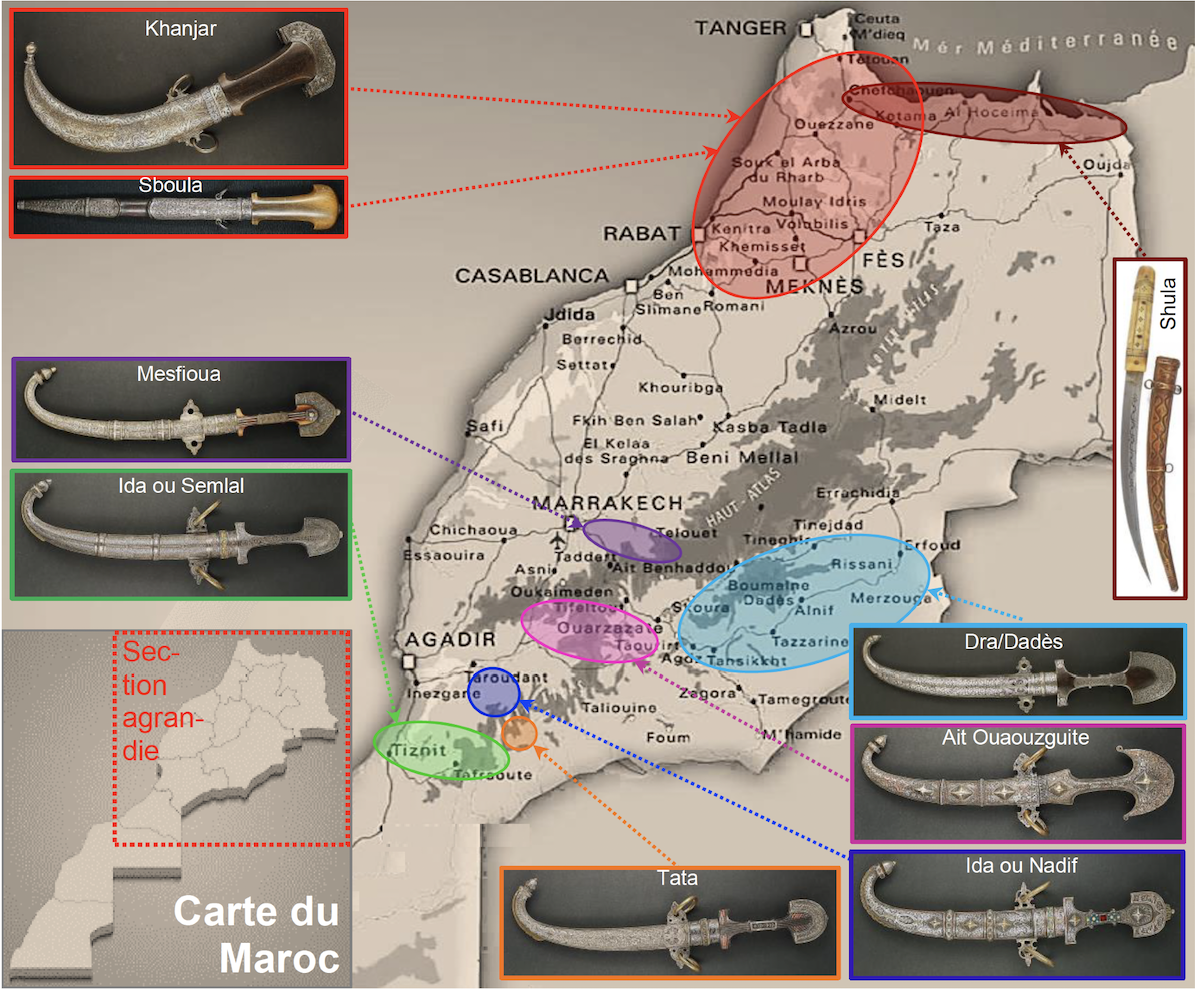Jim and Detlef,
Hans Waelty's book offers some insight into the S'boula/Shula distinction. The online selection has the following map and I reproduce it here under the principle of "fair use" for those who conduct research on these items (as we undoubtedly do on this web site).
Provenances of the Principle Types of Moroccan Knives of the 19th Century

M. Waelty distinguishes edged weapons made before the late 19th/early 20th C from those produced later because there was a change in the late 19th/early 20th C when edged weapons (especially
koummyas/khanjars) became more hybridized between the north and south of the country. The 19th C north/south differences are illustrated by the different centers of production/use shown on the map.
In the northern areas production and use was mainly in the urban areas adjacent to the Mediterranean Sea and the Atlantic Ocean. These urban areas were cosmopolitan and influenced by the Muslim communities distributed widely in northern Africa, Turkey and Indo-Persia.
In the southern regions, the population was mostly Berbers who followed more of the older spiritual beliefs, and had a form of "folk Islam" that reflected similar blends of Islam with old beliefs that are found elsewhere in the Muslim world. This resulted in a somewhat different form of curved dagger (
koummya) from the
khanjar in the north. M. Waelty explains this well.
Waelty also shows us that the
s'boula and
shula were knives from two regions in the north. The
shula (which I think is named after a tribal group of the same name) is found in an area in the north-east adjacent to the Mediterranean, while the
s'boula is found more to the west and south, mainly along the Atlantic cost in the north. There is some overlap of the two areas in the extreme north of the country.
According to Waelty, the straight-bladed forms are typical of the
s'boula, while the
shula have curved blades with acute points.